 | The Christmas is celebrated in almost all the countries around the world. People from all religions try to get the happiest moment during this festival. Christians normally celebrate this by going Church, offering prayer and attending family and friends party. Other religions like Hindu, Muslims, Buddhist, Jews celebrate as a part of gathering, offering best wishes and attending family and friend party. |

AUSTRALIA
As Australia was settled by the British, Christmas customs are the descendants of the
traditional British Christmas. A traditional meal includes a turkey dinner, with ham, and pork. A flaming Christmas plum pudding is added for dessert. In the Australian gold rushes, Christmas puddings often contained a gold nugget. Today a small favor is baked inside. Whoever finds this knows s/he will enjoy good luck. Another treat is Mince Pies. One tradition that is purely Australian began in 1937 by a radio announcer, Norman Banks who saw a lonely old woman listening to Christmas carols on the radio while a lone candle burned forlornly in her window. The following Christmas Eve he broadcast a great carol sing by all who want to join in , from the Alexandra Gardens along the banks of Melbourne's main river. "Carols by Candlelight" became a joyous annual event and was eventually broadcast in many other countries around the world. Australians surround themselves with Christmas Bush, a native plant which has little red flowered leaves.
AUSTRIA
Christmas is the most important holiday in Austria. Christmas in Austria is a very musical time. Many of the world's greatest carols came from here. December 6 is the day when St. Nicholas and his grotesque assistant, Krampus, may pay a visit. On December 24th, when the city is frantic with last minute shoppers, the countryside is a refuge for quiet traditions. Farmers chalk the initials of the Three Wise Men on the archway of the stable door; C for Caspar, M for Melchoir, and B for Balthazar, to protect the heard from sickness in the coming year. Christmas trees are lit on this day and in many villages "shelter-seekers" plod through deep snow from farm to farm re-enacting the plight of Mary and Joseph as they sought shelter on the eve of Christ's birth.
BANGLADESH
Because Bangladesh is mainly Muslim country, there is no official celebration of Christmas. However, Christmas is celebrated as a gift-giving ceremony. Christians in Bangladesh decorate mango or banana trees at Christmas time. Sometimes they also decorate their houses with mango leaves. Capital Dhaka becomes colorful during Christmas Evening.
BELGIUM
In Belgium, St. Nicholas pays two visits to each house. On December 4 he comes to check
into the behavior of each child, to find out if they have been naughty or nice. Then on
December 6 he returns with just rewards for all, either presents or switches, which he leaves in the shoes or small baskets that have been placed inside near the doorway, where he will easily find them. Just to get on his good side there are snacks of hay, water and carrots left for his horse or donkey. Christmas Day is reserved for religious celebrations & Nativity plays sponsored by the churches. They are often performed in 16th century costumes. In small villages, there are often three virtuous men chosen to portray the three Wise Men and go throughout the town, caroling at each doors and receiving small gifts of food.
BRAZIL
Christmas comes at the beginning of their summer season. It is a time for boating,
picnicking and other summer festivities. The red and green of Christmas decorations are
provided eucalyptus leaves and brilliant red flowers of many sorts. Father Christmas is called Papai Noel. Many Christmas customs are similar to USA or UK. For those who have enough money, a special Christmas meal will be chicken, turkey, ham, rice, salad, pork, fresh and dried fruits, often with beer. Poorer people will just have chicken and rice. Christmas evening can be spent outdoors in the balmy weather and is a great time for fireworks. The people of Northern Brazil, as in Mexico, enjoy a version of the folk play Los Pastores ("The Shepherds.") In the Brazilian version, there are shepherdesses rather than shepherds and a gypsy who attempts to kidnap the Christ Child.
CHINA
Christians in China celebrate by lighting their houses with beautiful paper lanterns and
decorating their Christmas trees, which they call "Trees of Light," with paper chains, paper
flowers, and paper lanterns. Chinese Children hang muslin stockings and await a visit from
Santa Claus, whom they call Dun Che Lao Ren (dwyn-chuh-lau-oh-run) which means
"Christmas Old Man." The non-Christian Chinese call this season the Spring Festival and celebrate with many festivities that include delicious meals and pay respects to their ancestors. The children are the main focus of these celebrations, they receive new clothes and toys, eat delectable food and watch firecrackers displays.
DENMARK
The main festival of the year in Denmark is Christmas. Danes celebrate Christmas Eve on December 24 and prolong the Christmas through December 25 and 26. Though many longstanding traditions have disappeared over the years, many traditions such as the family gathering at Christmas, lighting Christmas tree candles, and the month-long calendar candy are still celebrated today. On Christmas Eve, after a splendid of traditional goose, Danish families light candles on the beautifully decorated Christmas tree. After dancing round the tree, singing traditional songs, the members of the family exchange gifts. Some of the family will probably have attended church services in the afternoon.
EGYPT
Christmas Day is celebrated on the 7th of January, equal to the 29th of the Coptic month
Khiahk. On that day rich people distribute zalabya(donughts)and bouri(mullet fish). The
churches have always been decorated with special lamps and candles. Copts also give
candles to the poor. They are said to represent the candles Joseph used to protect Mary with on the night of Jesus's birth. At midnight a special service is held by the Coptic Pope. After the service families go home to break their fast. Children recieve new clothes and gifts. Copts also eat special sweet biscuits marked with a cross. Those biscuits are called Kahk and were originally eaten by Moslems on Eid el Fitr when Moslems too break their fast.
ENGLAND
Father Christmas, who reigns in the place of Santa Claus or St. Nicholas, is depicted wearing long robes with sprigs of holly in his long white hair. Letters are sent to him by children who want to make sure he has got their order right. These letters are not mailed though; they are thrown into the fireplace. If they go up the chimney, the wish will be granted; if not, one's wish goes not granted. Stockings are hung by the chimney or at the foot of the child's bed to receive small presents, which are opened Christmas morning. The Christmas tree has occupied a central position in the festivities, however, it has never completely replaced the combination of greenery & mistletoe called the kissing bough. In the countryside Christmas mummers can be found who perform plays and waits still carol through the streets. The church bell is rung once for every year since Christ's birth with the last stroke timed exactly for midnight. The Christmas meal consists of roast turkey or beef and desserts are mincemeat pies and plum puddings.
FRANCE
Nearly every French home at Christmastime displays a Nativity scene or creche, which serves as the focus for the Christmas celebration. The creche is often peopled with little clay figures called santons or "little saints." An extensive tradition has evolved around these little figures which are made by craftsmen in the south of France throughout the year. In addition to the usual Holy Family, shepherds, and Magi, the craftsmen also produce figures in the form of local dignitaries and characters. The Christmas tree has never been particularly popular in France, and though the use of the Yule log has faded, the French make a traditional Yule log-shaped cake called the buche de Nol, which means "Christmas Log." The cake, among other food in great abundance is served at the grand feast of the season, which is called le rveillon. Le rveillon is a very late supper held after midnight mass on Christmas Eve. French children receive gifts from Pere Noel who travels with his stern disciplinarian companion Pre Fouettard. Pre Fouettard reminds Pere Noel of just how each child has behaved during the past year. In some parts of France Pere Noel brings small gifts on St. Nicholas Eve (December 6) and visits again on Christmas. In other places it is le petit Jesus who brings the gifts.
GERMANY
Germans love to decorate their houses in various ways at Christmas. Many houses will have little wooden frames holding electric candles and colorful pictures of Santa Claus in their windows. They will have an 'Adventskranz' - a wreath of leaves with four candles. Advent means 'coming', is the 4 week period before Christmas). On each Sunday of Advent, another candle is lit. Most homes will also have little wooden 'cribs' means a small model of the stable where Jesus was born, with Mary, Joseph, Baby Jesus, and animals. After people have been to a church meeting, they get together under the Christmas tree. One person in the family will ring a bell and call everyone to come to the room to have verities of delicious food.
HOLLAND
In the Netherlands St. Nicholas is known as Sinterklaas. To the Dutch, St. Nicholas' Day is
the time of greatest revelry in the Christmas season. St. Nicholas comes on the last
Saturday of November by steamer. As he comes into the port of Amsterdam, all business
and traffic stops as the people pour out to greet him. The Christmas tree is the center of the home celebration, which consists of carols and story-telling in the afternoon. December 26 is also a holiday, called Second Christmas Day, and is a time to relax and probably go out to eat. The people of Twente in east Holland hold a special Advent ceremony in which special horns are blown to chase away evil spirits and to announce the birth of Christ. Horns are homemade out of one-year-old saplings and are three or four feet long. Blown over wells, they sound a deep tone, similar to a foghorn.
INDIA
Christmas is celebrated as an appropriate time for gift-giving and travel. Christians in India decorate their house with colored paper and lights. In some rural parts of India, small clay oil-burning lamps are used as Christmas decorations; they are placed on the edges of flat roofs and on the tops of walls. Churches are decorated with poinsettias and lit with candles for the Christmas Even service. Decoration during Christmas almost similar as Diwali in India. Other religion like Hindu, Muslim, Buddhist, celebrate Christmas as a part of their culture by going to Church during the evening , decorating their house, attending community services.
IRELAND
To the Irish, Christmas is a time for religious celebration rather than revelry. The best-known Christmas custom is that of putting a candle in the window, often decorated with some greenery, on Christmas Eve. The idea is to help light the way of the Holy Family or any other poor traveler out on such a night. After the evening meal, the table is also set with bread and milk and the door left unlocked as a symbol of hospitality that the family is offering to Mary and Joseph and the little one to come. The only festive note that is struck is in the pudding that caps the meal. Three puddings are made early in December, one each for Christmas, New Year's, and Twelfth Night. The day after Christmas, St. Stephen's Day, witnesses the rowdy old custom of hunting the wren, when boys go from door to door with a wren on a stick (today the wren is not a real one), singing the traditional song and begging for treats.
ISRAEL
Bethlehem, the little town where Jesus is said to have been born is the site of the Church of
the Nativity, which is ablaze with flags and decorations every Christmas. On Christmas Eve
natives and visitors alike crowd the church's doorways and stand on the roof to watch for the dramatic annual procession. Galloping horsemen and police mounted on Arabian horses
lead the parade. They are followed by solitary horseman carrying a cross and sitting astride
a coal-black steed. Then come the churchmen and government officials. The procession
solemnly enters the doors and places an ancient effigy of the Holy Child in the church. Deep
winding stairs lead to a grotto where visitors find a silver star marking the site of the birth of Jesus. Christian homes in Bethlehem are marked by a cross painted over the door and each home displays a homemade manger scene. A star is set up on a pole in the village square.
ITALY
Christmas in Italy is primarily a season of religious observance. It lasts for three weeks, from December 6th to Christmas Eve, beginning with a novena, or nine-day period of religious devotion. The celebrations end with the feast of Epiphany on January 6th. Christmas in Italy, has two origins. The familiar traditions of Christianity blended with the pagan traditions predating the Christmas era. The greatest feast of the ancient Roman Empire, "Saturnalia" (a winter solstice celebration), just happens to coincide with the Christmas celebrations of the Advent.
Christmas Eve is a time for viewing Italy's artistic and elaborate manger scenes or Cribs. They consist of figurines, in clay or plaster , of the infant Jesus, Mary and Joseph. An ox and ass are nearby because legend has it that they warmed the child with their breath. It is around this basic focal point that individual artisans create their own intricate landscapes. There may be grottoes, small trees, lakes, rivers, the lights of "Bethlehem" in the background, angels hung from wires, and occasionally, even local heroes. The most beautiful Cribs are set up in churches. There is often a contest between churches of the same town for the best Crib. People go from church to church to view and compare the Cribs and displays.
JAMAICA
Christmas starts with cleaning up the house. Walls are painted, the lawn is properly manicured, stones and trees are white washed. An animal is killed, a pig or a goat, and this is done a few days before Christmas. The meat shared with the neighbors or there is an exchange of whatever the other person has to offer. Large white yams, fruits, vegetables etcetera are reaped. A lot of sharing goes on. Most traditional churches have Carol Services, Christmas cantatas or concerts. Youngsters act and reenact the Christmas Story (The Birth of Christ) different times during the season. School would have had a similar occasion but this would have started and ended just before Mid-December when school goes on the Christmas Break. The sharing of gifts in schools and Sunday School is also a feature of Christmas in Jamaica.
JAPAN
Christmas was introduced in Japan by the Christian missionaries, and for many years the only people who celebrated it were those who had turned to the Christian faith. But now the Christmas season in Japan is full of meaning and is almost universally observed. The story of the Child Jesus born in a manger is fascinating to the little girls of Japan, for they love anything having to do with babies. In the scene of the Nativity they become familiar for the first time with a cradle, for Japanese babies never sleep in cradles. Many western customs in observing Christmas have been adopted by the Japanese. Besides exchanging gifts they eat turkey on Christmas Day, and in some places there are even community Christmas trees. They decorate their houses with evergreens and mistletoe, and in some homes Christmas carols are sung gaily.
MEXICO
Several weeks before Christmas, elaborately decorated market stalls or puestos are set up
in the plazas of every town and city. The puestos offer crafts of every conceivable kind, foods such as cheese, bananas, nuts, and cookies, and flowers such as orchids and poinsettias. The poinsettia is native to Mexico and is believed to have first been used in connection with Christmas in the17th century when Mexican Franciscans included the flowers in their Christmas celebration. The main Christmas celebration in Mexico is called las posadas, which refers to processions reenacting Joseph and Mary's search for a place to stay in Bethlehem.
POLAND
Christmas Eve is a time of family gathering and reconciliation. It's also a night of magic. Animals are said to talk in a human voice and people have the power to tell the future. The belief was born with our ancestors who claimed that Dec. 24 was a day to mark the beginning of a new era. It was bolstered by sayings such as, "As goes Christmas Eve, goes the year." Hoping for a good 12 months, everyone was polite and generous to one another and forgave past grievances. Polish rural residents are among the few who still keep up the old Christmas Eve customs. In eastern Poland it is still believed that girls who grind poppy seed on Christmas Eve can hope for a quick marriage. After dinner, they leave the house, and the direction of the first dog bark points to where their future husband will come from. Another fortune-telling trick is eavesdropping on the neighbors. If in a casual conversation, the girl hears the word "Go" it means she will get married in the coming year. A loud "Sit" announces long-lasting maidenhood.
PUERTO RICO
Early in the Christmas season, carolers begin going from house to house and from farm to farm. They wear homemade costumes of what the Magi might have worn and sing bright Spanish carols called aquinaldos and villancicos. They are rewarded with food and drink, and many from each house will join them, so that eventually there are great crowds going singing from place to place. Nine days before Christmas, the Mass of the Carols begins. This takes place each morning at 5:30 a.m. It is filled with music and usually the caroling continues on the way to work or home. The manger scenes are peopled with santos, hand-carved figures, that represent some oldest works of art. The tree and Santa Claus are also popular. Gifts arrive Christmas morning, but also on the Epiphany. On January 5 in the
evening, children leave water, grass and grain under their beds for the camels of the Wise Men and the next day find presents in their place.
ROMANIA
The tradition in Romania is for children to travel from house to house singing carols and reciting poetry and legends throughout the Christmas season. Carols form an important part of the Romanian folklore. Romanian carols are not simple songs (a sort of invocation in verse sung by children and lads, on the evening of Winters Holidays) with religions origin, but wide windows thought which we are allowed once in a year to go by the immaculate snow-towards the evergreen Heaven and to eye- touch God at least for an instant , in order to give us the power to surpass the life's obstacles. Carols put people in the mood for a perfect communion with the simple and healing greatness of Jesus' Birth.
RUSSIA
St. Nicholas is especially popular in Russia. The legend is that the 11th-century Prince Vladimir traveled to Constantinople to be baptized, and returned with stories of miracles performed by St. Nicholas of Myra. Since then many Eastern Orthodox Churches have been named for the saint, and to this day, Nicholas is one of the most common names for Russian boys. In the days of the Soviet Union, Christmas was not celebrated very much. New Year was the important time - when 'Father Frost' brought presents to children. With the fall of Communism, Christmas can be openly celebrated - either on December 25th; or more often on January 7th. This unusual date is because the Russian Orthodox church uses the old 'Julian' calendar for religious celebration days. Special Christmas food includes cakes, pies and 'meat dumplings'.
SPAIN
Christmas is a deeply religious holiday in Spain. The Christmas holiday season is full of the usual Christmas festivities, but there is one tradition, not at all common elsewhere. Named "Hogueras" (bonfires), this tradition originated long before Christmas itself. It is the observance of the winter solstice, the shortest day of the year and the beginning of winter. It is characterized by people jumping over fires as a symbolic protection against illness. This fire-jumping can be seen primarily in Granada and Jaen. As in many European countries, the children of Spain receive gifts on the feast of the Epiphany. The Magi are particularly revered in Spain. It is believed that they travel through the countryside reenacting their journey to Bethlehem every year at this time. Children leave their shoes on the windowsills and fill them with straw, carrots, and barley for the horses of the Wise Men. Their favorite is Balthazar who rides a donkey and is the one believed to leave the gifts.
SWEDEN
A thousand years ago in Sweden, King Canute declared that Christmas would last a month, from December 13, the feast of St. Lucia until January 13, or Tjugondag Knut (St. Canute's Day). The most important day is Christmas Eve. A special Christmas meal is eaten on Christmas Eve - ham (pork), herring fish, and brown beans - and this is the time when families give presents to each other. Many people attend a church meeting early on Christmas Day. The traditional Christmas Eve dinner would start off with a smorgasbord with a sip of akvavit; then lutfisk, a sun-dried cod served in cream sauce, and ham; finally rice pudding with an almond in it. On Christmas Day there is a service a 5:00 a.m. After that the day is devoted to rest and to religious observance.
SWITZERLAND
In terms of its traditions, Switzerland is basically four different countries. There are German, French and Italian areas. Gifts may be given either on Christmas Eve or New Year's Day, and they are brought by the Christkindli or St. Nicholas or even Father Christmas with his wife Lucy. Both the manger and the Christmas tree hold sway. Carols drift on the air in four languages. Switzerland has maintained its careful neutrality by absorbing the best of all nations.
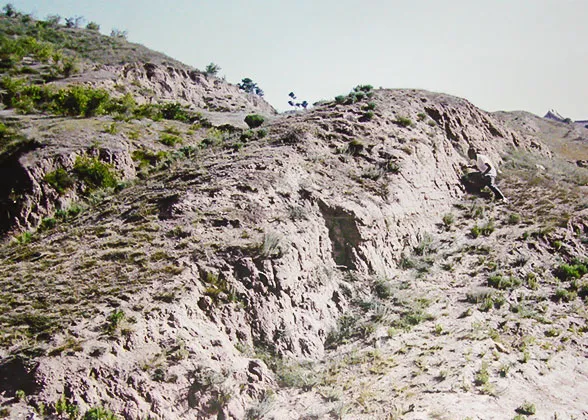
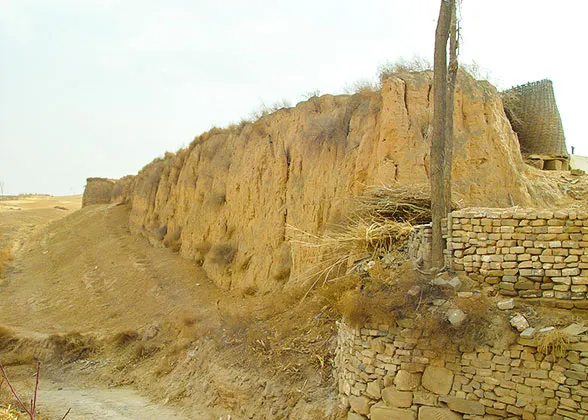 Mention of the Great Wall evokes an image of a huge dragon flying freely on beautiful mountains. Unfortunately, this great image exists only in the well-protected Great Wall scenic areas, such as the Badaling Great Wall, Mutianyu Great Wall, and Simatai Great Wall. Most other sections lie broken in remote vast grasslands and boundless deserts, exposed to thousands of years of rains, snows and winds. Many were swallowed by sand before becoming known to the world. The matter of protecting the Great Wall cannot be delayed.
Mention of the Great Wall evokes an image of a huge dragon flying freely on beautiful mountains. Unfortunately, this great image exists only in the well-protected Great Wall scenic areas, such as the Badaling Great Wall, Mutianyu Great Wall, and Simatai Great Wall. Most other sections lie broken in remote vast grasslands and boundless deserts, exposed to thousands of years of rains, snows and winds. Many were swallowed by sand before becoming known to the world. The matter of protecting the Great Wall cannot be delayed.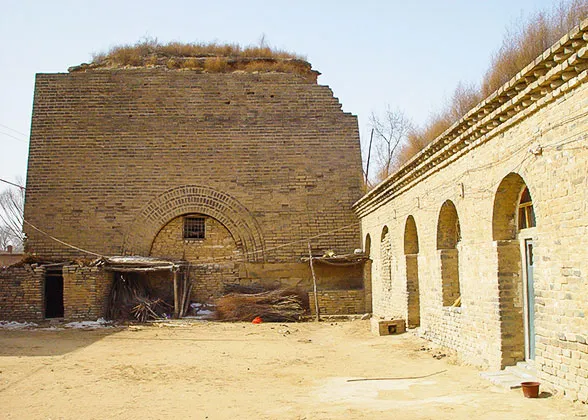
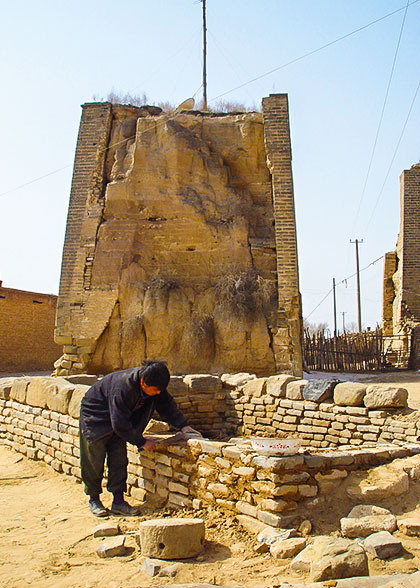 caused by tourism access development. In recent years, people have learned the importance of wall protection. Since they innocently repair the wall according to their own imagination without concern for its historical appearance, this is also considered a kind of damage.
caused by tourism access development. In recent years, people have learned the importance of wall protection. Since they innocently repair the wall according to their own imagination without concern for its historical appearance, this is also considered a kind of damage. 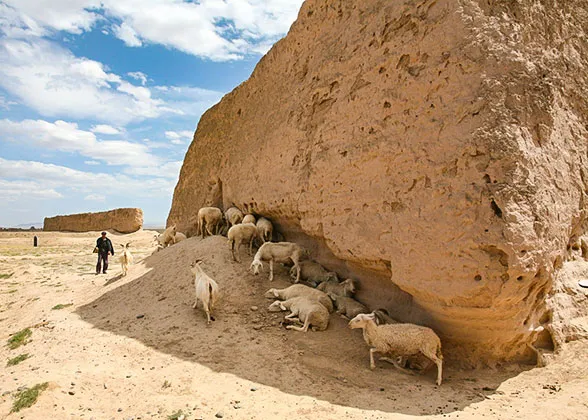 moving the bricks and never throwing litter about. People who live near the wall should not take bricks, stones and earth from the wall to build their own houses, or dig in the wall for sheepfolds or latrines. Officials should complete and enforce relevant regulations and laws. In September of 2006, the State Council promulgated the regulation on the protection of the Great Wall which went into effect on December 1 of the same year.
moving the bricks and never throwing litter about. People who live near the wall should not take bricks, stones and earth from the wall to build their own houses, or dig in the wall for sheepfolds or latrines. Officials should complete and enforce relevant regulations and laws. In September of 2006, the State Council promulgated the regulation on the protection of the Great Wall which went into effect on December 1 of the same year.












